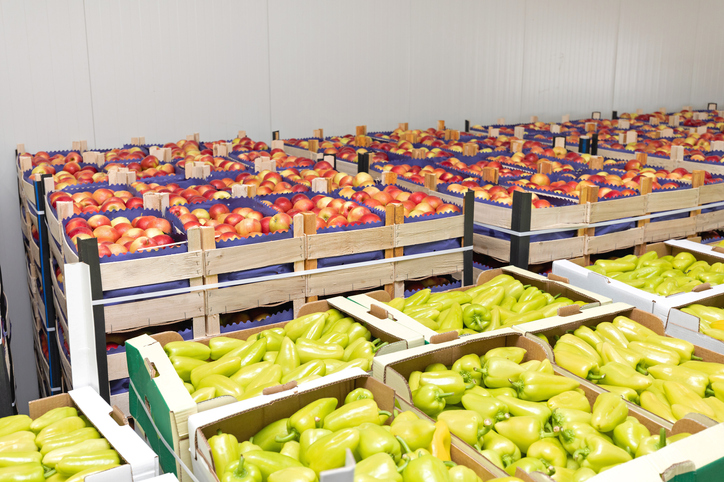Best Practices for Optimizing Inventory as a Produce Business
Optimizing inventory allows produce businesses to achieve balance by using data-driven methods to determine the right amount of inventory to hold. Read on to learn more.

Managing inventory is crucial to achieving success and profitability. Maintaining a balance between having too much inventory (which results in waste and increased costs) and having too little inventory (which leads to stockouts and lost sales) is a challenge that all produce businesses face.
Inventory optimization helps produce businesses find that balance by using data-driven methods to determine the right amount of inventory to hold.
This article will discuss the best practices for optimizing inventory and how Silo is the ultimate tool to help you accomplish this.
What is inventory optimization?
Inventory optimization refers to the process of effectively managing a business’ stock in order to minimize costs and maximize profits.
In the fresh produce sector, this can be particularly challenging due to the perishable nature of produce and the need to balance stock levels with demand. Inventory optimization therefore becomes essential to ensure that produce is kept fresh and in good condition, while also avoiding waste and reducing costs.
There are a number of key factors that contribute to effective inventory optimization in this sector, including:
Accurate forecasting of demand
Efficient supply chain management
Effective inventory control
One of the first steps in optimizing inventory levels is accurately forecasting demand. This involves analyzing historical sales data, tracking market trends, and monitoring the behavior of customers.
Accurate demand forecasting allows companies to make informed decisions about how much stock to hold and when to order new supplies. This, in turn, helps to ensure that there’s always enough product on hand to meet customer demand, while also allowing businesses to avoid overstocking, reducing the risk of waste.
The best practices for optimizing inventory as a produce business
Let’s have a look at some of the best practices to optimize the inventory of your produce business.
Utilizing technology for inventory optimization
Inventory management software and cloud-based solutions can automate tasks and provide real-time access to inventory data. This can streamline inventory management processes, leading to improved efficiency and reduced costs.
With technology, produce businesses can automate tasks like ordering, receiving, and tracking inventory, reducing the time and effort required for manual processes.
Supply chain inventory optimization
To optimize inventory, produce businesses must have a good understanding of their supply chain, including knowledge of suppliers, lead times, and expected quantities of produce. With this information, produce businesses can make informed decisions about inventory levels, reducing the risk of overstocking and stockouts to improve customer satisfaction.
One way to optimize the supply chain is through collaboration with suppliers. This can involve joint forecasting and inventory management, as well as vendor-managed inventory (VMI) systems that allow suppliers to manage inventory levels.
Inventory optimization models
Inventory optimization models are mathematical algorithms that analyze inventory data to determine the best way to manage inventory.
Types of models include:
Basic Economic Order Quantity (EOQ) models
Multi-item models
Time-based models
Using these models can allow for data-driven decisions to be made, resulting in reduced costs.
Regular inventory review
Regular inventory review is crucial for optimizing inventory. This process involves updating records to reflect changes in customer demand or supplier lead times, as well as incorporating new information about suppliers into inventory management. This helps ensure that inventory levels are accurate and up-to-date.
Effective inventory management policies and procedures
Establishing clear policies and procedures for inventory management is essential for optimizing inventory. These policies and procedures should include roles and responsibilities, controls for transactions, and accurate data.
Effective inventory management policies and procedures ensure that inventory management processes are efficient and well-controlled, cutting down costs.
Incorporating safety stock
Safety stock is a buffer of inventory that provides a cushion against stockouts. It helps produce businesses ensure that they always have sufficient inventory on hand, even in the face of unexpected demand or supply chain disruptions.
Data analysis and forecasting
Data analysis and forecasting are critical for optimizing inventory. Data analysis helps produce businesses understand trends in customer demand and supplier lead times, while forecasting helps produce businesses predict future demand and make informed decisions about inventory levels.
Optimize your inventory with Silo
Inventory optimization in the produce industry requires a strategic approach. By following these practices, produce businesses can reduce the risks of stockouts and overstocking, improve customer satisfaction, and increase profitability.
It’s important for produce businesses to continuously review and adjust their inventory optimization strategies based on changes in the market, customer demand, and the state of the supply chain.
Silo can help you to accomplish this by letting you more effectively monitor inventory levels. You’ll benefit from greater visibility, and, as a result, your business will stay ahead of the competition and continue to grow and succeed. With the right approach, any produce business can effectively optimize their inventory and achieve long-term success.
Book a demo with Silo today!
Want to book a demo with us?
Add your info and we’ll get one scheduled with you.